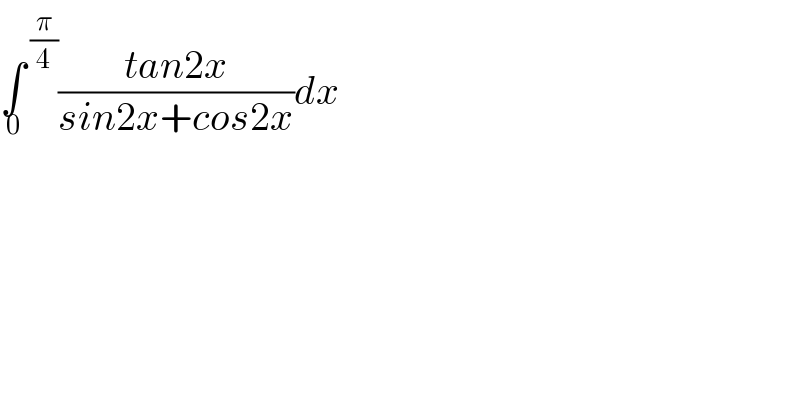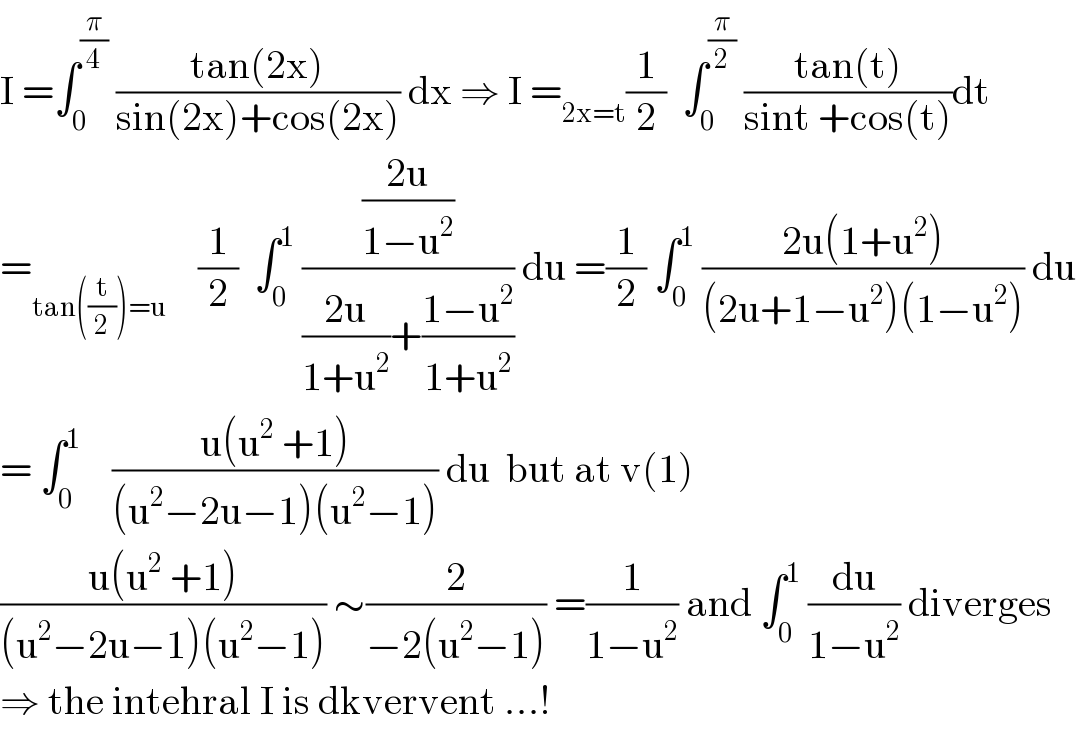
Question and Answers Forum
Question Number 114037 by mohammad17 last updated on 16/Sep/20

Answered by Dwaipayan Shikari last updated on 16/Sep/20
![∫_0 ^(π/4) ((sin2x)/(cos2x(sin2x+cos2x)))dx ∫_0 ^(π/4) (1/(cos2x))−(1/(sin2x+cos2x))dx =∫_0 ^(π/4) sec2x−(1/( (√2)))∫_0 ^(π/4) (1/( cos((π/4)−2x)))dx =(1/2)[log(sec2x+tan2x)]_0 ^(π/4) −(1/( (√2)))∫_0 ^(π/4) sec((π/4)−2x)dx →∞ Divergent](Q114041.png)
Answered by mathmax by abdo last updated on 16/Sep/20

| ||
Question and Answers Forum | ||
Question Number 114037 by mohammad17 last updated on 16/Sep/20 | ||
 | ||
Answered by Dwaipayan Shikari last updated on 16/Sep/20 | ||
![∫_0 ^(π/4) ((sin2x)/(cos2x(sin2x+cos2x)))dx ∫_0 ^(π/4) (1/(cos2x))−(1/(sin2x+cos2x))dx =∫_0 ^(π/4) sec2x−(1/( (√2)))∫_0 ^(π/4) (1/( cos((π/4)−2x)))dx =(1/2)[log(sec2x+tan2x)]_0 ^(π/4) −(1/( (√2)))∫_0 ^(π/4) sec((π/4)−2x)dx →∞ Divergent](Q114041.png) | ||
| ||
Answered by mathmax by abdo last updated on 16/Sep/20 | ||
 | ||
| ||